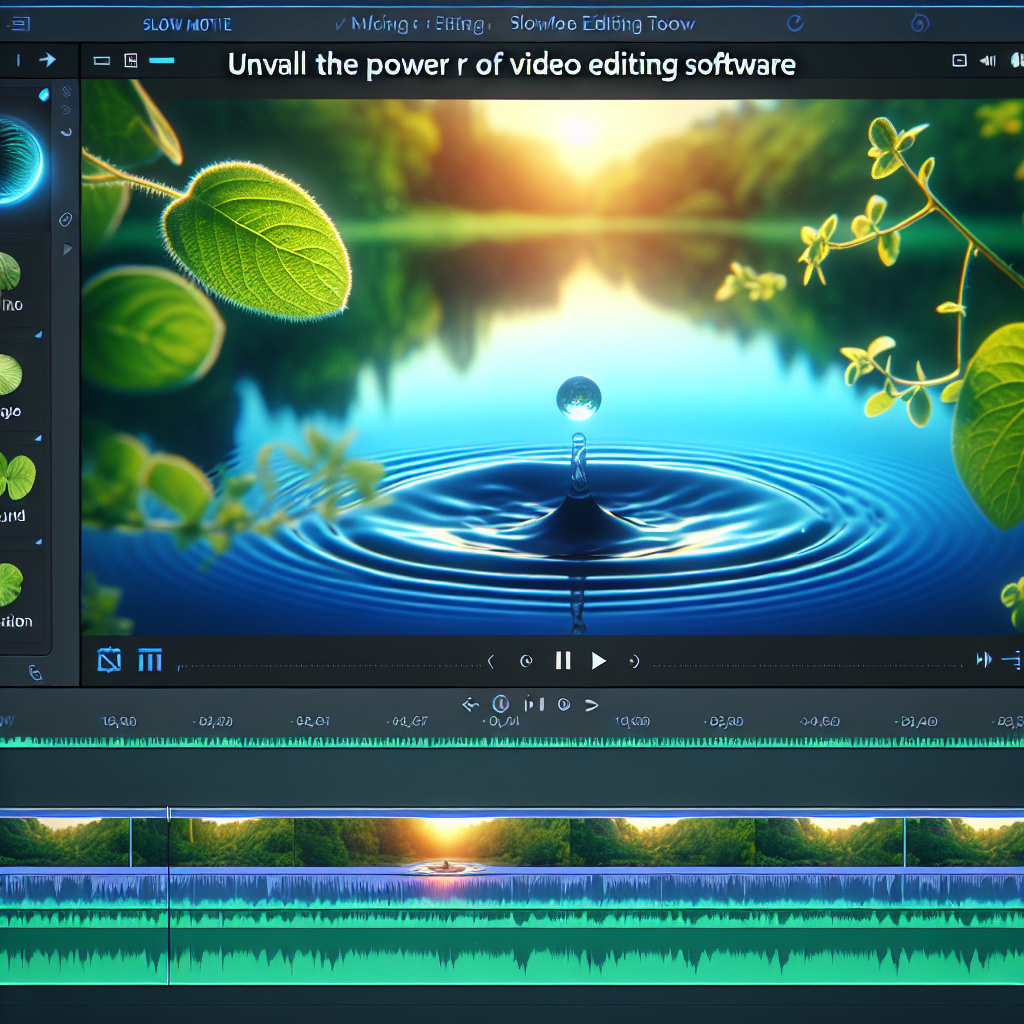Video editing software has revolutionized the way we create and consume visual content. From bracing action sequences to poignant emotional scenes, video editing has endowed filmmakers with the ability to control time and space within the narrative. Among many editing tools and techniques, the utilization of slow-motion effect is profoundly intriguing.
The Marvel of Slow-Motion
Slow motion is a cinematic technique that decelerates time during a scene. It captures the details of movement, emotion, and narrates the story without rushing, allowing the viewers to perceive the intricate details that they might have missed out under normal circumstance.
The Power of Slow-Motion in Video Editing
Slow-motion in video editing software allows filmmakers to play with the viewers’ perception of time and space. While editing, filmmakers can shrink or expand the plot’s timeframe to emphasize special moments. The technique is commonly used to draw attention to key events or emotions, encapsulate dramatic tension, and to delve deeper into the narrative.
The uses of Slow-Motion in Video Editing Software
Slow-motion effect can be used in numerous ways in a video editing software. Here are some common uses:
- Suspense: By decelerating the time, slow-motion is used to build suspense in thrillers or action scenes. It allows viewers to anticipate the action that is about to take place.
- Drama: Slow-motion pacing in dramatic moments accentuates the character’s emotions. Whether it’s an ecstatic moment or a devastating blow, slow-motion enables viewers to live the moment in detail.
- Emphasize Detail: In product advertisement or action sports, slow-motion is used to showcase intricate details of a product or an action the viewer would miss at normal speed.
Using Slow-Motion Effect in Video Editing Software
Most modern video editing software comes pre-built with slow-motion functionality. This can be easily applied by selecting the clip, choosing the ‘Speed/Duration’ settings and adjusting the slider or entering a precise speed percentage to slow the clip down.
Conclusion
When used effectively, slow-motion can significantly enhance the visual storytelling experience in video editing. With the right video editing software, anyone can master the power of slow motion and become a more effective visual storyteller. Understanding its proper application can help you change the pace of your narrative, evoke powerful emotions, and highlight key moments or details in your story.
FAQs
- Can all video editing software create slow-motion effects?
While most modern video editing software comes equipped with the slow-motion functionality, older or more basic software may lack this feature. - Do I need a special camera to capture footage for slow-motion?
While any camera can capture footage that can be slowed, a high-frame-rate camera will produce better results for slow motion. - Can slow-motion effects degrade video quality?
Slow motion can degrade video quality if the original footage doesn’t have a high enough frame rate. - When should I use slow-motion effects?
Slow-motion effects can be used to emphasize important moments, build tension, or reveal details in a scene. - Can I adjust the degree of slow-motion effects in video editing software?
Yes, you can adjust the speed of the slow-motion effect to suit your needs in most video editing software.

